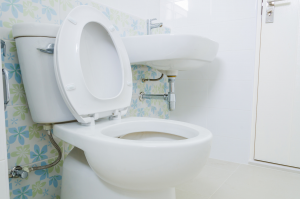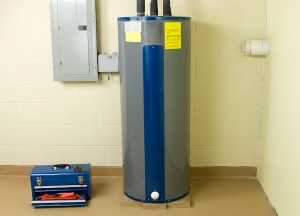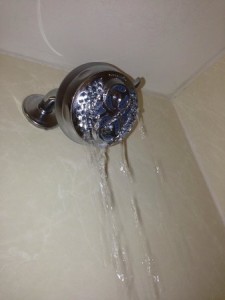Buying a new home is exciting, but you do not want to get carried away. You need to stay objective and make sure to perform all of the necessary inspections. Just because a house looks good on the surface, that does not mean that there might not be some serious problems. If you fail to take the necessary steps, it could turn what should be a great experience into a nightmare.
When it comes to older homes, some of the most common problems involve the plumbing. Buying a home with faulty plumbing could end up adding a significant cost on top of the purchase price of the home, and many of these problems could expose the home to further damage. If you are looking at buying a new home, you need to inspect certain features of the home’s plumbing. Read on to learn about the different plumbing features that should be inspected before buying a home.
Faucets, toilets and sinks
 To start, you want to check all of the faucets, toilets and sinks. Turn on every faucet in the home to check the water pressure. Make sure the water drains easily from the sinks and make sure that there are no leaks. For the toilets, you want to flush each one to ensure that it flushes properly and that all of the water drains out when you flush. You should also check around the base of the toilet for leakage.
To start, you want to check all of the faucets, toilets and sinks. Turn on every faucet in the home to check the water pressure. Make sure the water drains easily from the sinks and make sure that there are no leaks. For the toilets, you want to flush each one to ensure that it flushes properly and that all of the water drains out when you flush. You should also check around the base of the toilet for leakage.
If the water does not drain easily from the sinks or the toilet does not drain all of the water, this could be an indication that some of the drains are clogged. This is something that could result in costly repairs, or at least a call to your local plumber to clean the drain, so it is certainly worth the time to check.
Sewer Inspection
Checking the condition of the main sewer drain is important. If the home is older, the line could have tree roots growing into it, and there is the possibility that the sewer drain is starting to deteriorate. This is a problem that can be hard to assess by just flushing toilets and running water, so it is recommended that you get a professional plumber to perform a camera inspection.
If the sewer line has a problem, the repairs can be quite expensive. A simple clog can be removed, but if there is an issue like tree roots or the line starting to collapse, the problems will be reoccurring and continual. If you know about issues like these before you make a purchase, it can save you on a lot of trouble and the serious expenses that come with these types of repairs.
Water Heater
 The replacement of a water heater could add a significant expense to moving into a new home. When you are inspecting the plumbing, the state of the water heater is one thing that you do not want to forget to check.
The replacement of a water heater could add a significant expense to moving into a new home. When you are inspecting the plumbing, the state of the water heater is one thing that you do not want to forget to check.
The two most important points to consider are the age of the water heater and the presence of corrosion. If the tank is starting to corrode, it means that it is time for a new water heater. As for the age, you can usually check this by contacting the manufacturer with the model number and the serial number.
In addition to looking for corrosion and considering the age of the water heater, you also want to think about whether it is of a sufficient size to meet all of your family’s hot water needs. An experienced plumber should be able to help determine whether the water heater is big enough for your family.
Water Meter and Supply
The next step in your inspection should be to check the water meter and the shutoff valves. Start by turning off all of the faucets then head to the water meter. If the meter is still turning, this is an indication that there is a leak somewhere on the property.
After you check the water meter to see if there are any possible leaks, you also want to check the operation of the main shutoff valve. Close the valve and then go turn on some of the faucets in the home. If water still comes out, then you might have a problem.
Beyond checking the main shutoff valve for the home, you also want to check any other valves that might be dedicated to specific fixtures. Check the valves on the toilets, and if there are any others in the home, you should also make sure that they are working correctly.
Pipes
When you go to inspect the pipes, you have a number of things that need to be checked. One important point is to look for old lead or galvanized pipes. If the home has old pipes like these, then you will need to have them replaced.
Beyond making sure that you do not have any galvanized or lead pipes in the home, you also want to have the pipes inspected for leaks and corrosion. Leaky and corroded pipes can cause some serious water damage, so it is important to know what you are getting into before you buy a home.
Water Pressure
 Adequate water pressure is a common problem with a lot of older homes. In the past, we did not have the same standards for the width of water lines that supply different areas of the home. If the lines are too thin, the water supply might not be able to keep up when more than one person is using water.
Adequate water pressure is a common problem with a lot of older homes. In the past, we did not have the same standards for the width of water lines that supply different areas of the home. If the lines are too thin, the water supply might not be able to keep up when more than one person is using water.
Different fixtures need different pipe sizes and if more than one fixture is on the same line, the required size increases. An experienced plumber will be able to inspect the lines to ensure that they are the correct size, and there are pressure tests that can be used to check the performance.
While this is a good list of things to inspect concerning a home’s plumbing, it is important to note that different homes may have different issues. Some homes might have uncommon features that could add more steps to the inspection process, and there are situations where it takes the knowledge of an experienced plumber or home inspector to even know what to look for.

